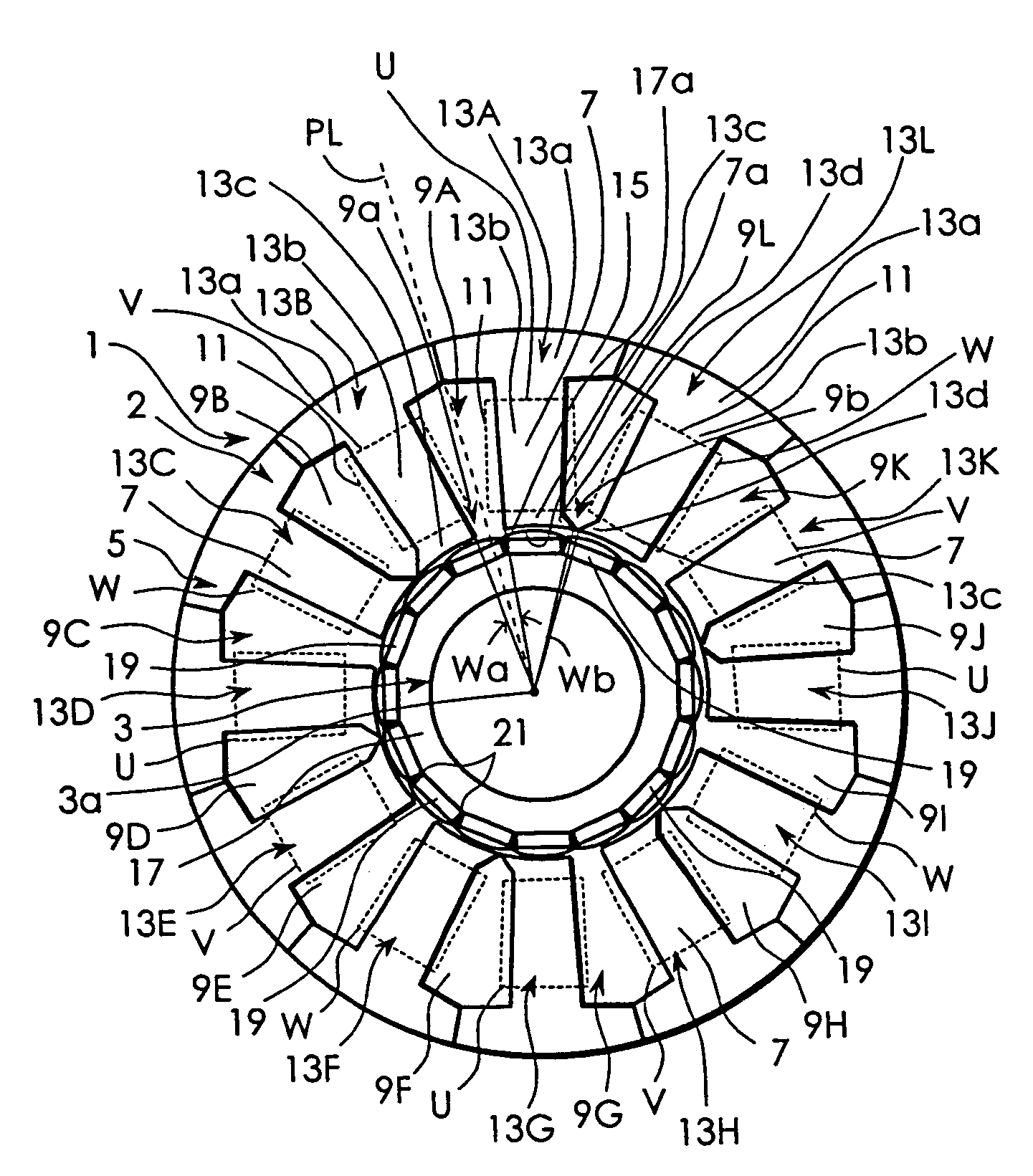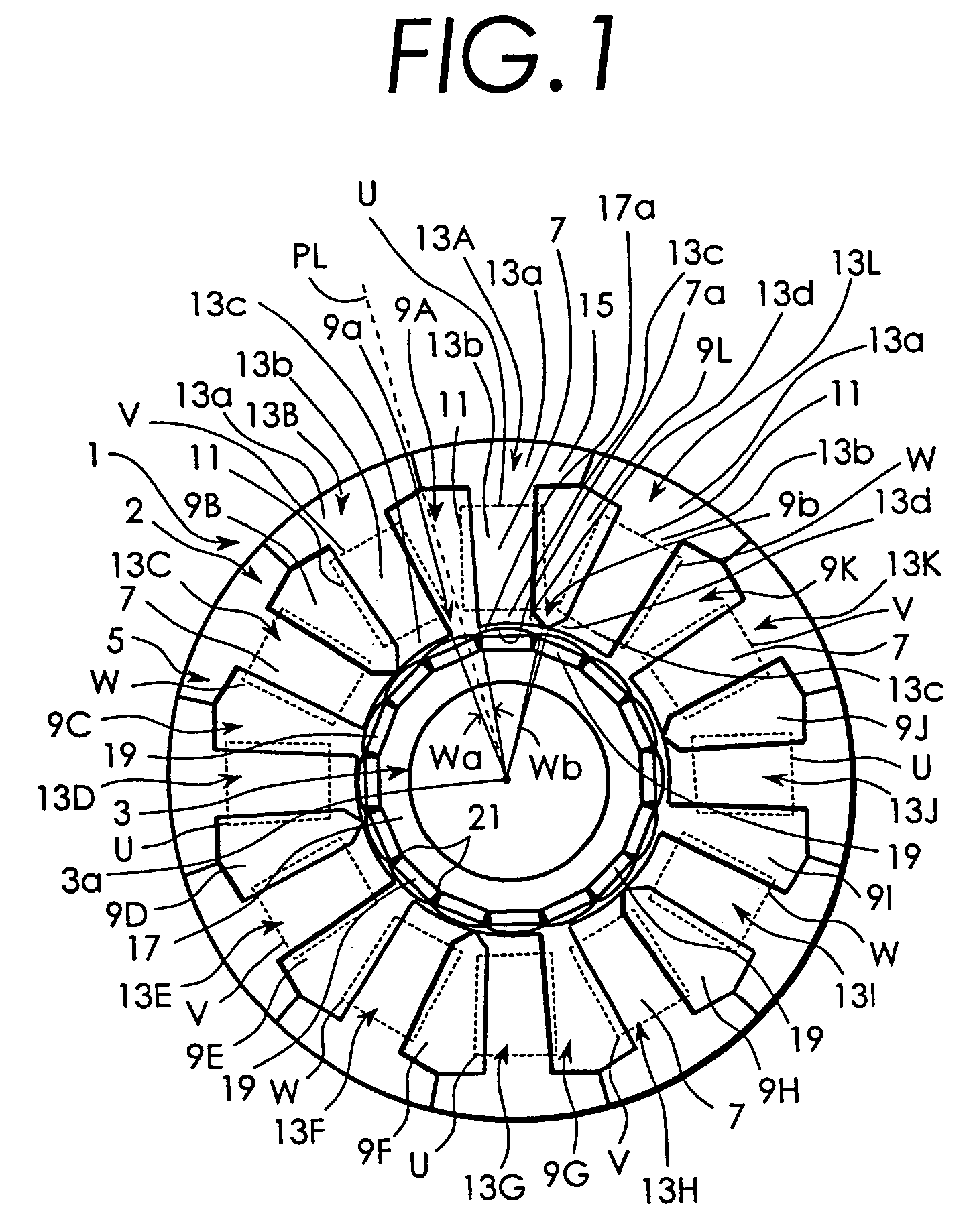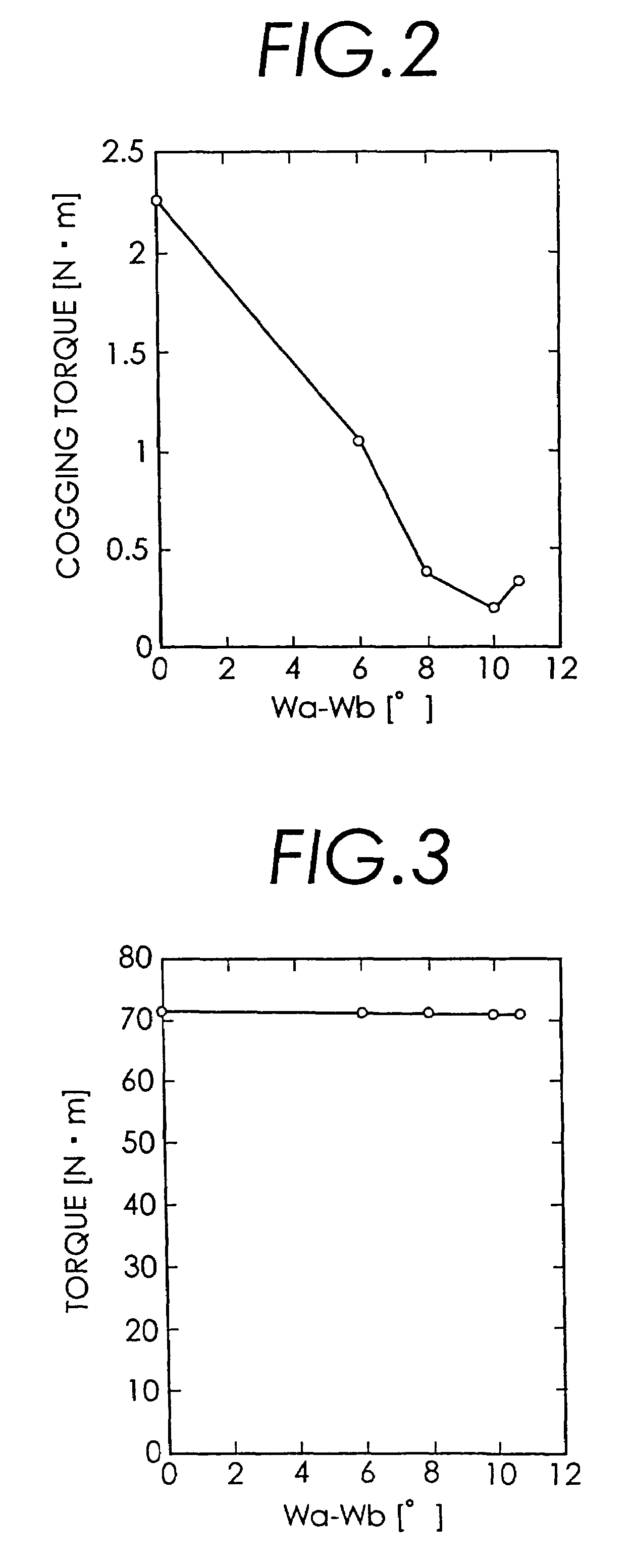Permanent magnet rotary motor
a permanent magnet, rotary motor technology, applied in the direction of magnetic circuit rotating parts, magnetic circuit shape/form/construction, association with control/drive circuits, etc., can solve the problems of motor vibration and speed variation, torque reduction, torque ripple, etc., to reduce cogging torque and torque ripple
- Summary
- Abstract
- Description
- Claims
- Application Information
AI Technical Summary
Benefits of technology
Problems solved by technology
Method used
Image
Examples
first embodiment
[0036]Embodiments of the present invention will be described below in detail with reference to the appended drawings. FIG. 1 is a schematic diagram showing a stator 1 and a rotor 3 of a permanent magnetic rotary motor used for explaining the present invention. As shown in FIG. 1, the stator 1 has a stator core 2 and winding sections 11. The stator core 2 has a cylindrical yoke 5 and 12 stator magnetic pole sections 7 that extend from the inner periphery of the yoke 5 toward the center of the stator core. Each of the 12 stator magnetic pole sections 7 has a magnetic surface 7a at a leading end thereof.
[0037]The stator core 2 is constituted by 12 divided cores 13A to 13L arranged in combination in a peripheral direction of the rotor 3. The arrangement is such that the 12 divided cores 13A to 13L are alternately inverted or turned over in the peripheral direction. The divided cores 13A to 13L are configured by laminating a plurality of steel plates 15 in an axis line direction of the r...
second embodiment
[0050]In the second embodiment, FIG. 7 is a graph indicating results obtained by examining the relationship between a rotor rotation angle and the cogging torque when the angle difference Wa−Wb is set to 0° and the relationship between the rotor rotation angle and the cogging torque when the angle difference Wa−Wb is set to 5°. It can be seen from FIG. 7 that when the angle difference Wa−Wb is set to 5°, the amount of the cogging torque produced at the time of a change of the rotor rotation angle can be reduced more than when the angle difference Wa−Wb is set to 0°.
[0051]Next, in a permanent magnet rotary motor in which the least common multiple LCM (P, N) of the P and the N becomes equal to the least common multiple LCM of the ½ P and the N, the relationship between the value of the angle difference Wa−Wb and the cogging torque was examined. More specifically, tests were carried out using the permanent magnet rotary motor having 10 poles and 12 slots. In the permanent magnet rotary...
PUM
 Login to View More
Login to View More Abstract
Description
Claims
Application Information
 Login to View More
Login to View More - R&D
- Intellectual Property
- Life Sciences
- Materials
- Tech Scout
- Unparalleled Data Quality
- Higher Quality Content
- 60% Fewer Hallucinations
Browse by: Latest US Patents, China's latest patents, Technical Efficacy Thesaurus, Application Domain, Technology Topic, Popular Technical Reports.
© 2025 PatSnap. All rights reserved.Legal|Privacy policy|Modern Slavery Act Transparency Statement|Sitemap|About US| Contact US: help@patsnap.com



